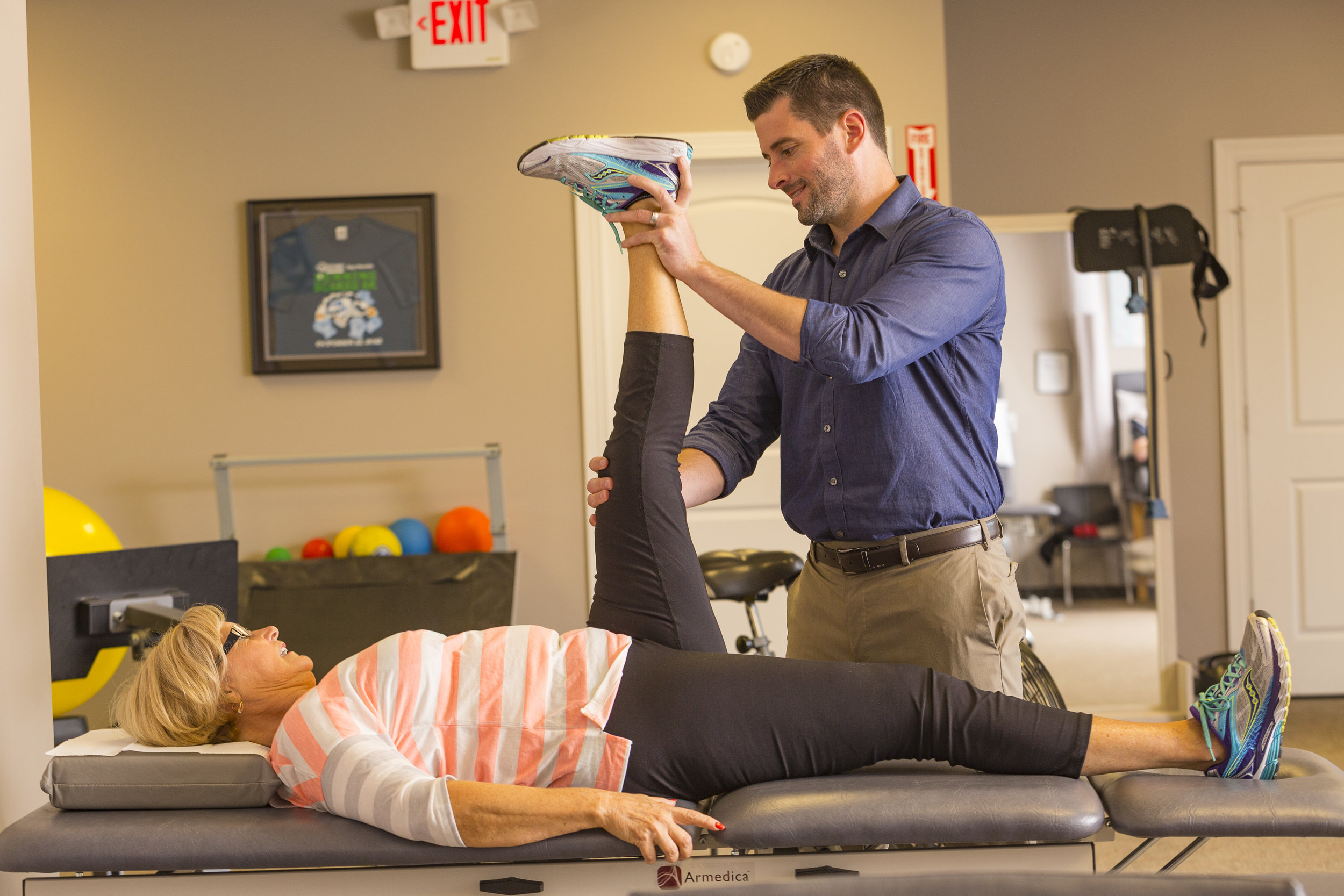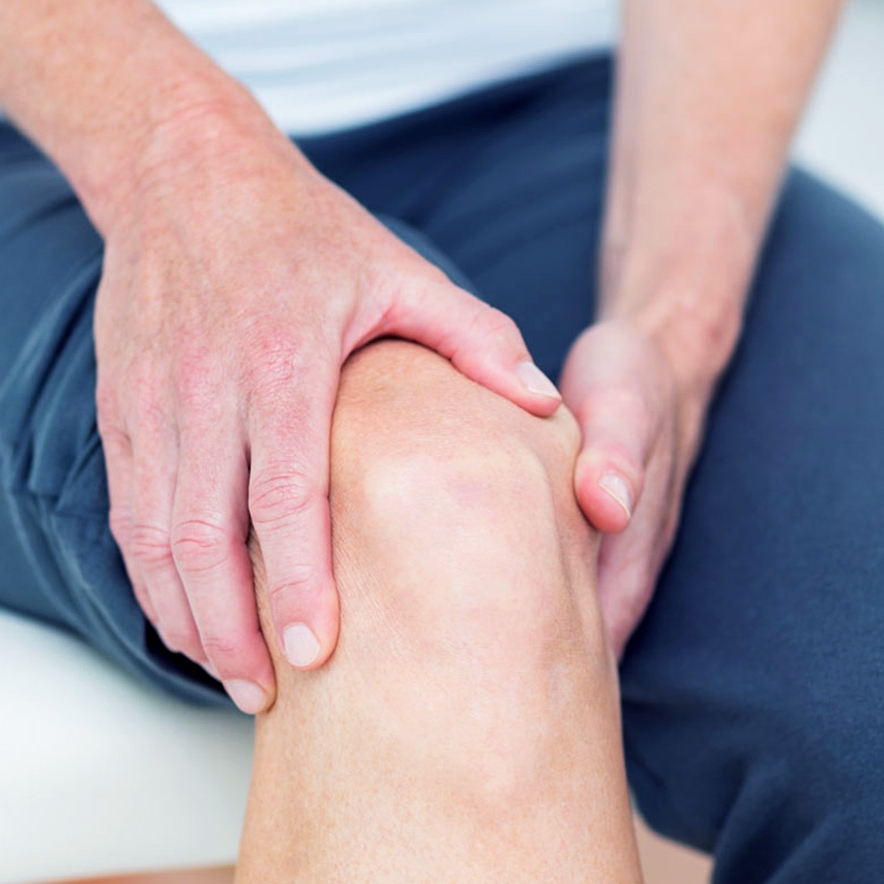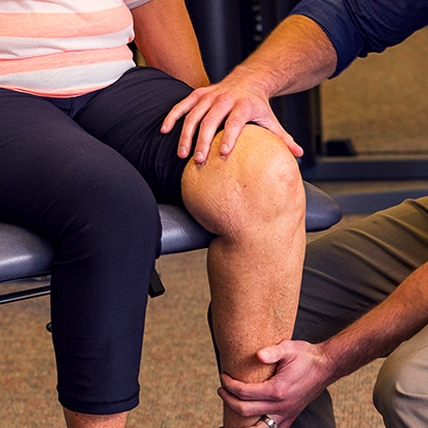Knee Pain
Knee pain can generally be due to lack of flexibility and strength not only at the knee but also at the hips and core. The focus throughout physical therapy for knee pain is to address the deficit and poor mechanics that are contributing to the pain such as quadriceps, hip abductor strengthening and hamstring flexibility.
OPTC Patient Care Journey
Your personal OPTC physical therapist will perform a thorough evaluation. Upon completion of your evaluation your physical therapist will design an exercise program tailored to your specific needs and goals.
A large portion of your treatment will also include manual massage, mobilization, and other hands on techniques. Our goal is to work with you and your pain and return you to an active lifestyle.
The following are examples of what might be included in your individualized physical therapy treatment program : Mulligan/ Maitland joint mobilizations, Mackenzie exercises based on extension or flexion, soft tissue mobilization with Graston techniques, ASTYM, modalities for comfort (cold/hot pack, e-stim, ultrasound), dry needling, traction, use of our reformer, and much more!
Below is a list of some of the most common injuries associated with knee pain.
Meniscus Tear
This is a tear to the cartilage or cushioning of your knee, often times resulting in an ACL injury. There are two menisci in each knee, medial (inside) and lateral (outside). The ends of the thigh bone interact with the meniscus when you bend and straighten your knee. Any tear in this structure could cause pain behind the knee and side of the knee.
Hypermobile Patella
This is typically an injury that occurs when someone has had a dislocation or subluxation of the knee cap. This can cause increase stress through stabilizing structures of the knee cap and cause it to move too much. This excess movement can cause increase stress on the cartilage on the back of the knee cap and cause increased pain with activity. This injury is typically categorized as a patellofemoral pain, which is pain along the knee cap due to poor mechanics.
Patellar Tendonitis
The patellar tendon attaches the knee cap to the shin bone. As described with patellofemoral pain, this injury typically occurs due to poor mechanics at the patella and causes extra stress at the tendon. Increased stress causes small microtears throughout the tendon which makes the tendon weaker and painful to use.
Hamstring Strain
The hamstring muscle is made up of three different muscles and is a main stabilizing structure for the knee. This muscle is located on the back of the thigh and is injured during activities that place stress throughout the muscle i.e. running, sprinting, etc.




